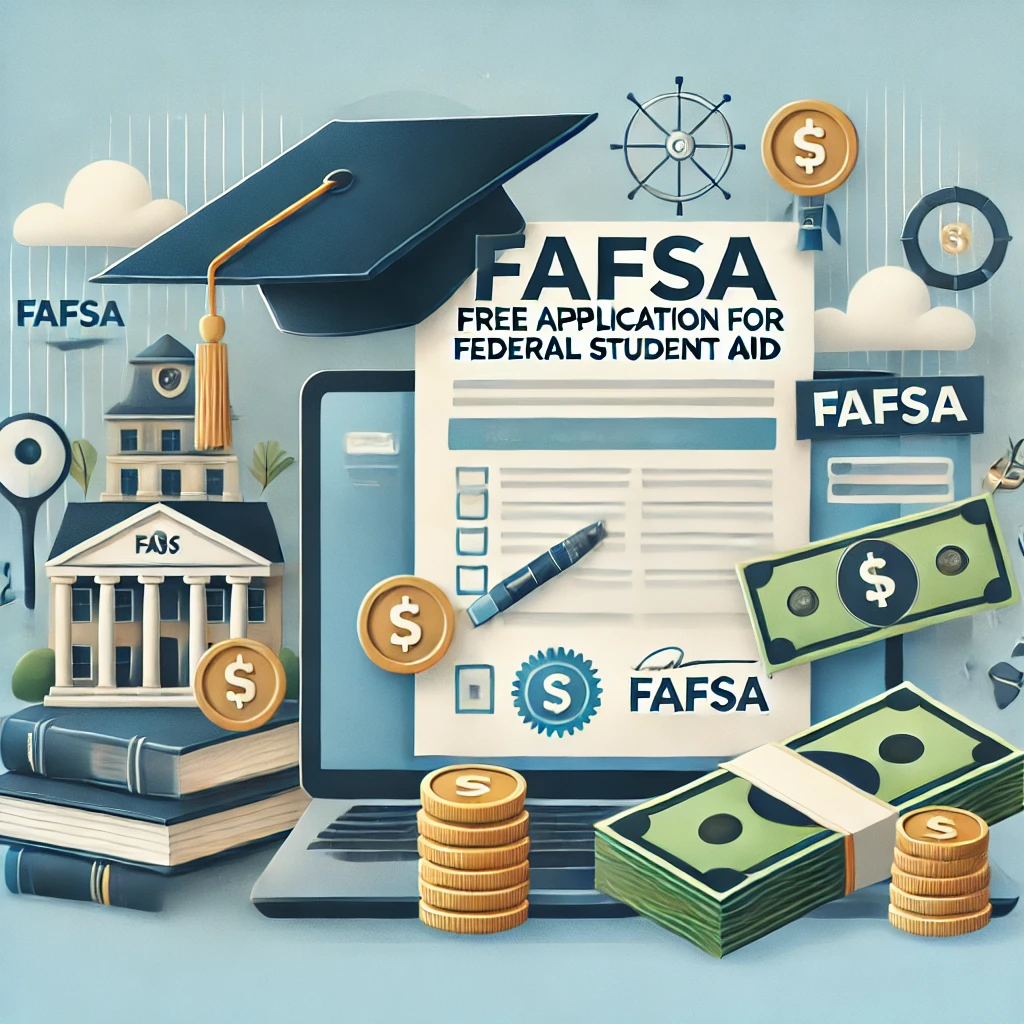
The Free Application for Federal Student Aid (FAFSA) is a crucial resource for students in the United States seeking financial support for higher education. By completing the FAFSA, students can gain access to federal grants, loans, and work-study programs, as well as state and institutional aid. In this guide, we’ll explore recent updates, the application process, and tips for maximizing financial aid eligibility.
What Is FAFSA?
FAFSA is an application that determines your eligibility for various forms of financial assistance for college or career school, including federal grants, subsidized and unsubsidized loans, and work-study opportunities. It is used by the federal government, state agencies, and educational institutions to distribute billions of dollars in financial aid annually. Understanding how FAFSA works is critical for securing the funds needed for your education.
Recent Changes to FAFSA
Recent updates to FAFSA have made the application process simpler and more accessible:
- Simplified Application • The FAFSA Simplification Act has reduced the number of questions on the form, streamlining the process for applicants. This change aims to encourage more students to apply for aid.
- Direct Data Retrieval • Applicants can now directly import their tax information from the IRS into the FAFSA form, simplifying the process by reducing manual entry and minimizing errors. This eliminates errors and saves time.
- Adjusted Timelines • In some years, the application cycle begins later than the traditional October 1 date. For instance, the 2025-26 FAFSA became available on December 1 to ensure smoother implementation and avoid technical glitches.
How to Complete the FAFSA Application
- Create an FSA ID • Start by creating a Federal Student Aid (FSA) ID at studentaid.gov. This will allow you to access the FAFSA form and sign it electronically.
- Gather Required Documents • Have these documents ready:
- Social Security Number (or Alien Registration Number for eligible non-citizens)
- Federal income tax returns and W-2s
- Bank statements and records of investments
- Records of untaxed income
- Complete the Form • Fill out the FAFSA form accurately. Use the IRS Data Retrieval Tool (DRT) to import tax information directly into the application.
- Submit Early • Many forms of financial aid are awarded on a first-come, first-served basis, so early submission can improve your chances of receiving aid.
Eligibility Requirements
- Citizenship: FAFSA is primarily available to U.S. citizens and eligible non-citizens. International students typically do not qualify but should check with individual institutions for potential aid.
- Enrollment: Students must be enrolled or accepted for enrollment in an eligible degree or certificate program.
- Satisfactory Academic Progress (SAP): Maintaining good academic standing is essential for continued aid eligibility.
Common Challenges and Solutions

- Technical Difficulties • Past FAFSA cycles have experienced technical issues, causing frustration for applicants. To address these concerns, the Department of Education has introduced extensive testing and phased rollouts for new features. To avoid delays, ensure you’re using a stable internet connection and verify all entered information before submission.
- Complex Questions • Some questions, especially regarding financial details, can be confusing. Seek assistance from your school’s financial aid office or use the help resources on studentaid.gov.
- Missing Deadlines • Federal deadlines are typically June 30 of the academic year for which aid is sought, but state and institutional deadlines may be earlier; for example, California’s Cal Grant program has a deadline of March 2. Keep track of all relevant dates to avoid missing out.
Tips for Maximizing Financial Aid
- Complete FAFSA Early • Submitting your application as soon as it opens can increase your chances of receiving aid, as some grants and scholarships have limited funding that is distributed on a first-come, first-served basis.
- Review for Accuracy • Double-check all information before submission to avoid delays caused by corrections.
- Include Multiple Schools • List all schools you’re considering attending to ensure your FAFSA information is shared with them.
- Seek Help When Needed • Utilize resources such as guidance counselors, community organizations, and FAFSA workshops to navigate the process effectively.
Final Thoughts
FAFSA is a powerful tool for making higher education more accessible and affordable. By understanding recent changes, staying organized, and submitting your application on time, you can maximize your financial aid opportunities. Whether you’re pursuing a degree or a career certificate, FAFSA can help you take a significant step toward achieving your educational goals.


